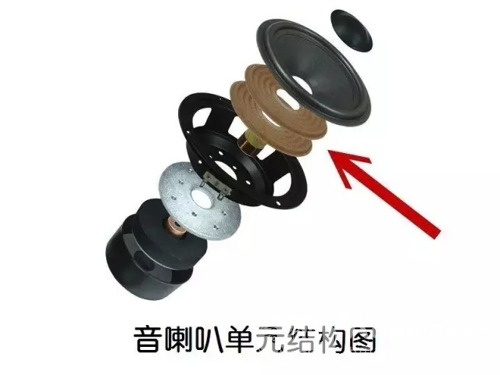The speaker system is one of the important components of audio equipment, usually composed of speakers, frequency dividers, cabinets, sound absorbing materials and so on. Speaker systems have lower failure rates and fewer types of faults. There are four types of common faults. Second, sometimes there is no sound. 1. Poor speaker lead contact. Usually the voice coil lead is moldy or poorly welded. When the paper cone vibrates frequently, the breakpoint is turned on and sometimes turned off, and when the irregularity occurs, the fault does not sound. Fourth, the sound is abnormal 1. There are debris in the magnetic gap. If debris enters the magnetic gap, the voice coil will rub against the debris when it vibrates, causing the sound to be hoarse.
AC Contactor switch mainly used for making or breaking circuit at a long distance, suitable for controlling starting\stopping\reversing of AC motor. AC Contactor of korlen conforms to the requirement of IEC60947-4-1& GB14048.4 standards.
Except AC Contactor, there are many different types of low voltage electric appliances, such as Thermal Relay,Manual Motor Startor ,led light, Circuit Breaker, etc.
AC Contactor,Magnetic Contactor,Wafer Style Valve Wenzhou Korlen Electric Appliances Co., Ltd. , https://www.zjaccontactor.com
1. Silent 1. The speaker is disconnected or the crossover is abnormal. After the speaker cable is broken, the speaker unit has no excitation voltage, which will cause a silent failure. The frequency divider is generally not easy to break, but there may be failures such as lead wire joint desoldering and frequency dividing capacitor short circuit.
2. The voice coil is broken. The multimeter R×1 file can be used to measure the speaker lead wire soldering piece. If the resistance value is ∞, the lacquer of the lead wires at both ends of the voice coil can be scraped off with a small knife to expose the bare copper wire and then measured. If it still does not pass, the voice coil is internally Broken line; if the measurement is connected and there is a "snake" sound, it means that the voice coil lead is broken, the solder can be soldered on the thread, and another enameled wire similar to the voice coil winding can be used for welding.
3. The speaker leads are broken. Due to the frequent vibration of the speaker cone, the braided wire is easily broken, and sometimes the wire is broken, but the cotton core remains connected. Such braided wires are not readily available and can be replaced with slightly longer flexible wires.
4. The voice coil is burned. Use the multimeter R×1 file to measure the speaker leads. If the resistance is close to 0Ω and there is no “click†sound, it means the voice coil is burnt. Before replacing the voice coil, first remove the debris in the magnetic gap, then carefully put the new voice coil into the magnetic gap, and correct the voice coil. While listening to the sound, fix the upper and lower positions of the voice coil with super glue, and wait for the voice coil to be placed at the best. After the position, fill the gap between the voice coil and the paper cone to about half with super glue. Finally, seal the dust cover and put the speaker cone up. After one day, it can be used normally. 
2. The voice coil lead is broken or is about to be shorted.
3. Poor contact of the power amplifier output jack or disconnection of the speaker input line.
Third, the volume is small 1. The performance of the speaker is poor, the magnetic properties of the magnetic steel are reduced. The sensitivity of the speaker depends mainly on the magnetic properties of the permanent magnet, the quality of the cone and the pros and cons of the assembly process. The ferromagnetic object can be touched by the magnetic steel, and the magnetic strength of the magnetic steel can be roughly estimated according to the magnitude of the attraction. If the magnetic property is too weak, only the speaker can be replaced.
2. The magnetic core is loose. When the magnetic core of the speaker is loose, it will be sucked to one side by the magnetic conductive plate, so that the voice coil is squeezed to hinder the normal sound. You can use the hand to gently press the paper cone during maintenance. If you press it, the voice coil may be pressed by the core post. It needs to be disassembled and re-adhered before it can be used again.
3. The divider is abnormal. When there are components in the crossover, the signal in the corresponding frequency band is blocked, and the speaker in the band has a volume glitch. It is important to check whether the crossover capacitor connected in parallel with the woofer is short-circuited, and whether the crossover inductor coil connected in parallel with the tweeter is short-circuited between layers. 
2. Voice coil rubbing the core. The voice coil is not in the correct position and rubs against the core, causing the sound to be distorted. Correct the voice coil position or replace the voice coil during maintenance.
3. The cone is broken. If the damaged area is large, the paper cone should be replaced, and the damaged area can be repaired with a slightly thin paper cone or other tough paper.
4. The cabinet is defective. Poor sealing of the cabinet or improper installation of the decorative mesh cover may cause cracking during playback. In addition, the case plate is too thin to cause resonance, and abnormal sound is also generated.